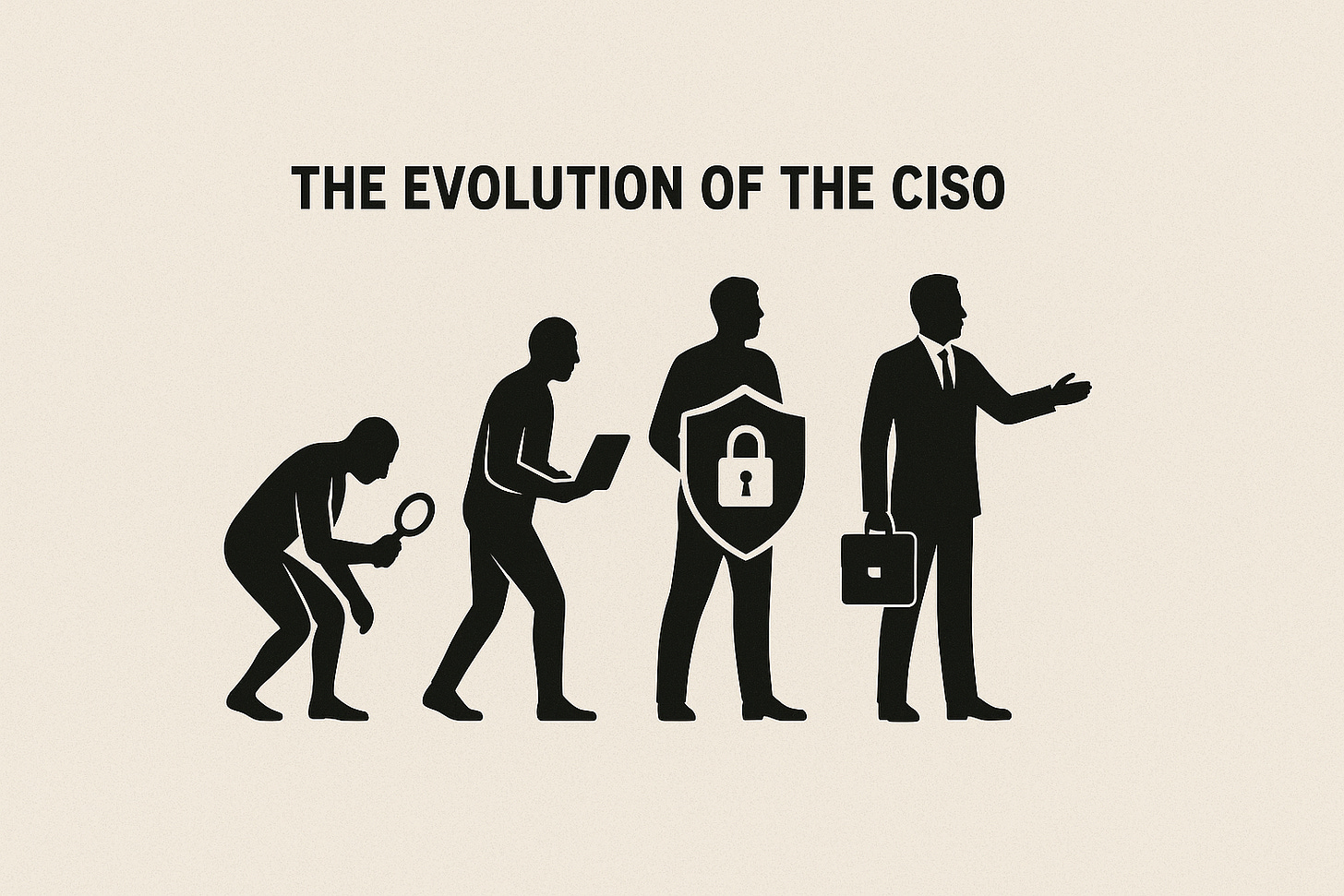From Technician to Strategic Multiplier
The Three Generations of CISO Leadership
The modern CISO is navigating a paradox. They are expected to defend, enable, lead, communicate, and transform—often within a system that wasn’t built for any of those outcomes. We’ve reached a tipping point where survival isn't enough. It's time to evolve.
In my book, The CISO on the Razor’s Edge, I argue that the role is structurally misaligned—and that true leadership requires breaking free from legacy expectations. To do that, we first have to understand how we got here.
Let’s walk through the three generations of CISO leadership: where we’ve been, where many still are, and where we need to go next.
1. The Technician: Reactive, Isolated, and Underpowered (2000s–2015)
In the first wave of cybersecurity leadership, the CISO was often buried in IT. The job was narrowly scoped: secure the perimeter, manage firewalls, install AV, and pass audits. Most CISOs reported to the CIO or CTO, with little visibility or influence beyond technical circles.
Key characteristics:
Security viewed as infrastructure.
Identity seen as plumbing, not strategy.
Governance meant policy docs—rarely enacted, often ignored.
Success meant “nothing bad happened on my watch.”
This era produced CISOs who were technically excellent but politically underpowered. And as breaches became more frequent and more public, the limits of this model became painfully clear. When Equifax hit, when OPM hit, when Target hit—the world discovered what many CISOs already knew: we had built a house of controls without a foundation of influence.
2. The Risk Translator: Smarter, But Still Defensive (2015–2024)
The second wave brought maturity and frameworks. NIST. MITRE. FAIR. CISOs began to speak the language of the business—not fluently, but passably. Boards started listening. Risk quantification models became fashionable, and governance committees multiplied.
Thought leaders like Richard Seiersen helped reframe cybersecurity as a portfolio of decisions. The modern CISO, in this view, is a rational actor who enables the business to make collaborative tradeoffs across control, transfer (e.g., cyber insurance), and reserves (e.g., capital resilience). This was a meaningful leap forward.
But here’s the catch:
The CISO was still reactive.
The conversation still centered on loss avoidance and compliance risk.
Identity, trust, and velocity were still marginalized.
The systems of action stayed fragmented, and organizational entropy remained high.
In this model, the CISO becomes a sophisticated advisor. Valuable, yes—but still fundamentally operating inside a box built by others. As I wrote in the book, this is the CISO as “strategic firefighter”—smarter, faster, but still in response mode.
And that brings us to today.
3. The Strategic Multiplier: Velocity, Trust, and Performance (2024–2030)
The next generation of CISO leadership is already emerging—and it looks nothing like the past.
These leaders don’t just accept the system as-is. They re-architect it. They install new governance models, rethink measurement, align cybersecurity with velocity and trust, and lead as full partners in strategy.
This is the CISO as a Strategic Multiplier.
They’re not just minimizing regret. They’re enabling outperformance—and they’re doing it by confronting the organizational entropy that’s been quietly killing execution from within.
This shift is driven by three core realizations:
The job isn’t just to secure systems. It’s to secure progress.
That means being embedded in product decisions, transformation strategy, and operational tempo. Speed with safety. Progress with proof.The old org chart doesn’t work.
Authority without accountability, siloed KPIs, conflicting incentives—these are not flaws in the system; they are the system. And the modern CISO needs to design around them.Strategic Performance Intelligence (SPI) is the new frontier.
You can’t govern what you can’t see.
And most organizations today? They’re not measuring performance—they’re playing guesswork.
The Strategic Multiplier installs decision telemetry across team health, control performance, strategic alignment, and operational drag.
Not to report posture, but to drive progress.
This is why I created the SPI 360 framework. And it’s why I wrote the book. Because we need a language—and a leadership system—that’s built for the real job of modern cybersecurity.
Where Are You Leading From?
Most CISOs are still stuck in Generation 1 or 2—either seen as the technical expert or the risk explainer. Very few are empowered to act as strategic co-leaders, and even fewer have the data or systems to back it up.
But that’s exactly what the moment demands.
If you’re feeling like the system wasn’t designed for the work you’re trying to do—you’re not crazy.
It wasn’t.
But that doesn’t mean you can’t lead anyway.
Want to Break the Pattern? Start Here.
📘 The CISO on the Razor’s Edge is your guide to escaping the status quo.
It’s for every cybersecurity leader who knows they’re capable of more—and is ready to lead differently.
🧭 And if you want to see how aligned your organization is for performance, take the Entropy Scorecard.
It’s free. It’s 16 questions. And it might tell you more than your last 3 audits combined.
➡️ Buy the book here → Amazon | Barnes & Noble
➡️ Join the next SPI IQ Workshop → www.identient.ai/spiiq/
Let’s build what comes next.




